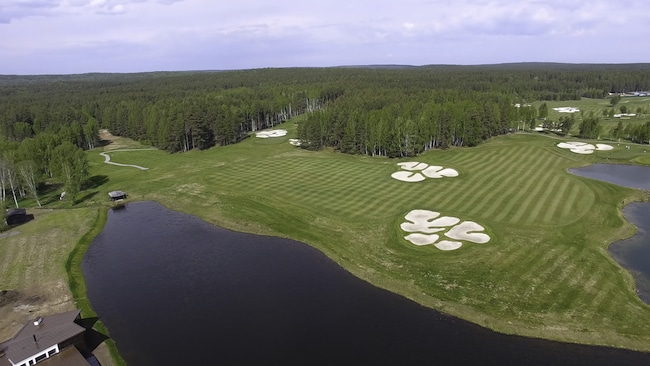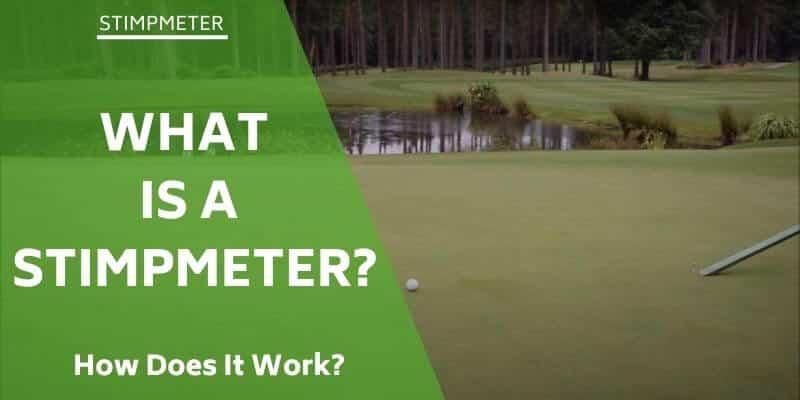Golf courses come in all shapes and sizes, and because of the variance in difficulty, your handicap does not translate from one course to another. This is where slope rating comes into play. So what is slope rating in golf?
What is the slope rating of a golf course? Slope rating measures a golf course’s difficulty for a bogey golfer compared to a scratch golfer. The slope rating from each tee box determines your handicap index for that specific course. Golf courses worldwide commonly adopt the slope rating system to let golfers compete with each other.
Slope rating is a renowned golf term widely used to assess the handicaps and playing conditions of the course. If you don’t understand this term, you’ll miss out on getting the most from your game.
Below we will dive into some common questions related to slop rating such as:
- How is slope rating measured
- How is your handicap index measured using slope number
- What is a hard vs. easy slope rating in golf?
- What is a course rating?
- Who determines course and slope ratings?
- How are course and slope ratings measured?
Let’s dive into golf slope ratings fully explained!
How is the Slope of A Golf Course Measured?
To understand what is slope in golf, it’s important to note that slope rating tells a higher handicapper golfer how hard the course plays. So, if you belong in the high handicap category, knowing how slope rating works will serve you well.
Slope ratings are measured using a relatively more straightforward calculation:
Slope Rating = (Bogey rating – Scratch rating) x 5.381
- Bogey rating is the average score of a bogey golfer on the course.
- A bogey golfer is someone with a handicap between 17 to 22, according to the USGA
- Scratch rating is the same as the course rating.
Learn more about the average golf scores in a 9-hole.
What is the need for all these numbers? And how do they define the golf slope meaning?
Well, the slope rating allows a player to take his handicap index to almost any course in the world and compete with a golfer of any category.
How is Handicap Index Measured Using Slope Number?

The calculation behind how the handicap index is defined for specific courses is a little tricky and requires some knowledge of how the handicap system works. You can read our article on World Handicap System to find out more.
The following determines course handicap for any golfer:
Your Course Handicap = Your Handicap Index x (Slope Rating / 113) + (Course Rating – par)
A golf course with standard difficulty has a rating of 113.
What is a Hard vs. Easy Slope Rating in Golf?
A slope rating resides between the range of 55 to 155.
The average slope rating in the USA is 120. However, the standard difficulty of a course is rated by 113. So in the USA, the average is slightly above standard difficulty (surprising, no?)
An easy slope rating is anything below 110, while everything above 120 is regarded as a hard slope rating.
But do slope numbers really represent how hard a course is playing?
Well, it does, and it does not.
Slope numbers determine how challenging a course is for a bogey compared to a scratch golfer.
The slope number determines how many strokes a bogey golfer would require to compete with a scratch golfer. However, the course rating of a golf course entirely relates to the difficulty of the course.
What is Course Rating?

Two ratings frequently define golf courses:
- The course ratings
- The slope ratings
Scratch golfers do not concern themselves with slope ratings because slope ratings are figured for less skilled golfers.
On the other hand, golfers like you and me, who have not spent every second on the course like a scratch golfer, use the slope number and course rating to identify what their handicap for the course should be.
The course rating is another numerical value used to determine how a golf course plays, and it’s defined as:
The course rating of a course is the average score of a scratch golfer from a specific set of tees. The course rating is not the same as the slope number, and it directly corresponds to strokes on 18 holes. A 71-course rating on a par 72 means a scratch golfer is expected to play 71 on this course.
Read more: Golf Handicap — A Beginners Guide
Who Determines Course & Slope Ratings?
The USGA’s accredited associations decide on the slope ratings and course ratings.
A knowledgeable staff person from the organization who has been educated in the USGA’s course rating system visits the course and evaluates each hole using the same standards that apply to all golf courses.
The defined course and slope rating are adjusted for when the course is most playable, i.e. when most people come to play.
According to USGA rules, each course is reevaluated 10 years after receiving its ratings. Two to three times a year, new courses are examined. The initial slope and course rating ratings of new courses are likely to vary as they become more played; this is because new courses mature as they come under playing conditions.
How Are Course & Slope Ratings Measured?

All courses are rated using the same criteria set out by the USGA utilizing the USGA Course Rating System.
A golfer is identified as a scratch or bogey by the USGA. A bogey golfer reaches a 370-yard hole in two shots, whereas a scratch golfer can reach a 470-yard hole in two strokes. You will learn how these definitions truly assist the raters in defining ratings for a course.
One of the characteristics used to determine ratings for a golf course is playing length.
The playing length is based on five variables for each hole:
- Roll
- Elevation
- Wind
- Dogleg & forced lay-ups
- And altitude
Based on the playing length parameters, a golf course’s total playing length can be decreased or increased relative to the physical yardage of the course.
Ten obstacles are assessed on each hole and the course’s actual playing length. One of the ten challenges is psychological, while nine are physical.
The nine obstacles the rating official considers are:
- Fairway
- Topography
- Rough and recoverability
- Green target
- Bunkers
- Out-of-bounds/extreme rough
- Water
- Trees
- And green surface
Each obstacle’s difficulty is indicated by a value between 1 and 10. How distant the obstacle is from the landing zone or objective determines the obstacle difficulty measurement.
The course raters first assess the landing area for the bogey golfer 200 yards off the tee. The crew would take measurements of the fairway’s width, the distance to the closest boundary line, the presence of any bunkers, and any adjacent trees and hazards.
The same steps are performed for a scratch golfer with a drive of 250 yards off the tee. Until the golfer reaches the green, this process is repeated. From there, the green width and depth and water and bunkers surrounding the green are measured.
Every hole and tee goes through the same procedure. This technique yields a scratch and bogey rating, calculating the slope number.
FAQs
Is a 130 Slope Rating Hard?
A 130 golf course slope rating is on the higher side of the slope rating. The average slope rating in the USA is 120. A course with a slope rating of 130 will play harder for a bogey golfer as compared to how it will play for a scratch golfer.
Is a Higher or Lower Slope Better?
The slope does not always correspond to the difficulty of a course. However, a higher slope number will get you more strokes against your scratch golfer competitor than a lower slope. A higher slope could mean the course is playing difficult, but it does not directly indicate course difficulty.
What is Augusta National’s Slope Rating?
The course at Augusta National has a slope rating of 135 and a course rating of 74.0. The course plays long and hard; not even a scratch golfer is expected to break par because of the course rating. It’s one of the highest slope ratings on the PGA Tour.
What is The Easiest Slope Rating in Golf?
Slope ratings range from 55 to 155. 55 is the lowest slope rating value you can get. A course with a slope rating of 55 should play incredibly easily and provide golfers with the minimum challenge. And a course with a 155 slope rating is incredibly challenging, even for a scratch golfer.
How are Golf Courses Rated if Conditions are Poor?
Courses are not rated depending on the condition they are at the point when a rater comes to visit the course. All ratings are determined by considering the prime playing conditions of the course for optimal results.
Final Thoughts
Slope ratings serve a very crucial purpose in golf. One thing I absolutely love about golf is that it allows everyone to compete with anyone, no matter the skill set. No other sports offer that – If someone is better, they’re just better, but in golf, you get handicaps.
Within the rules of golf, your handicap lets you compete with the best and the worst of the worst with an equal chance of winning and losing.
Slope ratings reevaluate your handicap to be defined & applied to a specific course. So go out, win matches from better players, and just have fun.
Abdul Moiz is a skilled golfer and professional writer. He graduated with a Bachelor of Business Administration from the National University of Sciences and Technology in Islamabad and has played golf for over 5 years. He has a handicap index of 18.5, uses TaylorMade Sim driver, and loves his 60-degree wedge. He's tested and reviewed over 50 products and specializes in reviewing budget-friendly golf club sets. You can connect with Abdul at X, LinkedIn, or Work.AbdulMoiz@gmail.com.







